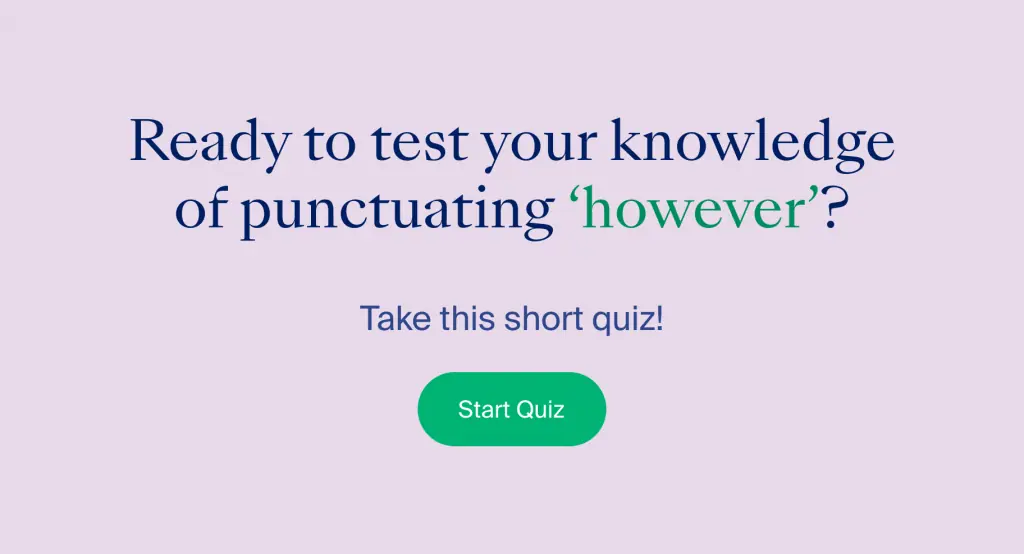- 3-minute read
- 10th July 2022
How to Punctuate However in the Middle of a Sentence
Many writers are unsure about what punctuation to use with the word however. Does it need a comma? If so, should you place it before, after, or both?
The confusion is because how you punctuate however depends on how you use it. Once you know how however works in your sentence, it’s easy to punctuate it correctly.
What Type of Word Is However?
However is usually used in one of two ways. It’s either a conjunctive adverb that connects two clauses or simply an adverb that modifies an adjective, verb, or another adverb.
Noting that however is not a coordinating conjunction is crucial here. For, and, nor, but, or, yet, and so are the seven coordinating conjunctions. You can remember them by the acronym FANBOYS. People usually punctuate however wrong because they think it’s a coordinating conjunction.
However: A Conjunctive Adverb
However is often used as a conjunctive adverb in academic and other formal writing. It introduces a contrasting idea and usually starts a sentence. When using it mid-sentence, you should put a semicolon before it and a comma after it if the two parts are stand-alone sentences:
If you remove the word however from this sentence, you’re left with two clauses that could each be a valid sentence:
This is where it’s crucial to know that however isn’t a coordinating conjunction because if it was, you would simply separate the two parts of the sentence with a comma:
Even though the meaning remains clear, this is a punctuation error that would be obvious to someone reading your essay, article, resume, etc.
If however doesn’t start a clause, put commas on either side of it (unless it’s the last word in the sentence):
Find this useful?
Subscribe to our newsletter and get writing tips from our editors straight to your inbox.
However: An Adverb
When used as an adverb, however means no matter how or in whatever way. You can add it to a noun, a verb, or another adverb to change its meaning:
When used this way, however doesn’t need a comma before or after it because the part of the sentence that starts with however is a subordinate (or dependent) clause. This means that it adds information but wouldn’t be a full sentence on its own. You don’t need to put a comma in front of a subordinate clause when it comes after the main (independent) clause.
In our third example, we used a comma between the two clauses because the subordinate clause, However quietly I play the trombone, comes first.
Summary: Punctuating “However” Mid-Sentence
Punctuating the word however is straightforward once you’ve established whether you’re using however as a conjunctive adverb or simply as an adverb. Remember that it’s not one of the seven coordinating conjunctions (for, and, nor, etc.).
When used as a connecting adverb in the middle of a sentence, however must be followed by a comma. Also, you should put a semicolon at the end of the previous clause. This comes right before the word however in most sentences. When however is not the first word in a sentence, it needs a comma before and after it.
Finally, when however is an adverb, it doesn’t have a comma on either side.
However you use it, we hope you’re now sure about how to punctuate however.

We love punctuation, so we’ll gladly help if you want your writing checked for mistakes. You can even give our service a try for free by sending us a 500-word trial document.




